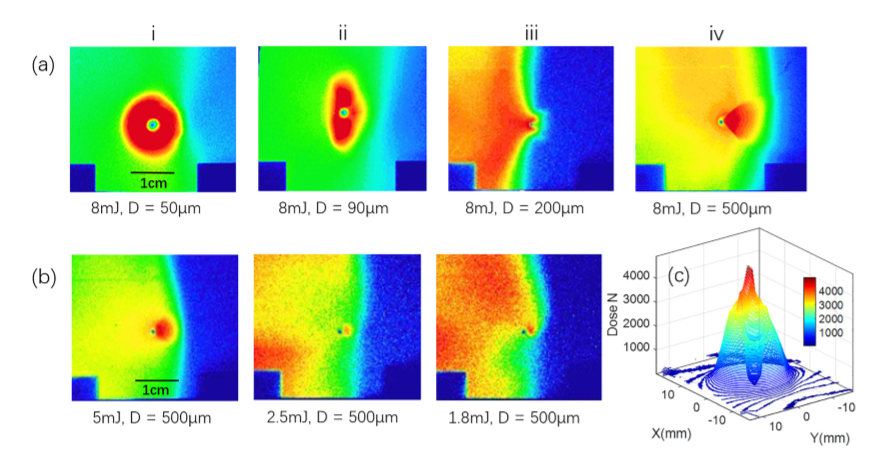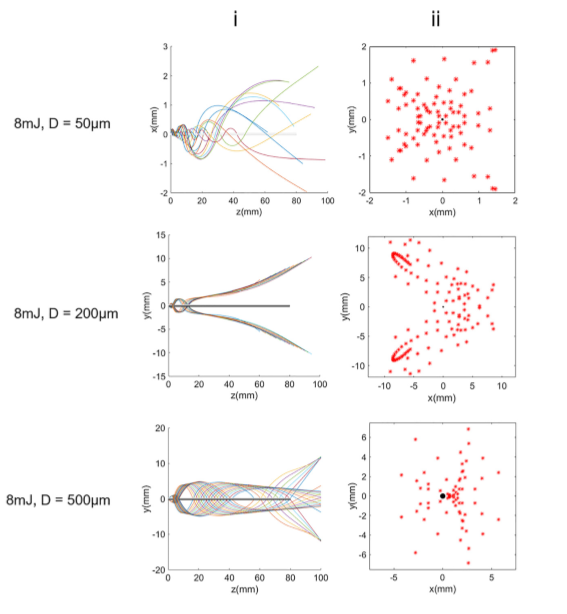Electron collimation effect along wire targets provides a novel concept of compact electron source that is capable of transporting electrons in a manner analogous to optical fiber. The electron behaviors in this effect is important to many applications such as laser-wire based electron sources and terahertz generation.
Recently, researches at State Key Laboratory of High Field Laser Physics at Shanghai Institute of Optics and Fine Mechanics, Chinese Academy of Sciences (SIOM, CAS) has firstly reported the dependence of the collimation and guidance effects on the laser intensity, contrast ratio, and target shape.
The experiments were performed with a regenerative 800-nm Ti: sapphire laser pulses of 25 fs/8 mJ/1 kHz and tungsten wires of different diameter. By experimentally comparing electron charge and formed patterns at different laser pulse energy and wire diameter, it was found that the collimated electron charge grew in proportion with the 1/2 power of wire diameters and the square of pulse energies.
Simulation of the laser-wire interaction indicated a quasi-static electric field established on wire surface immediately after laser irradiance. This field is essentially responsible for the collimation effect in laser-wire interaction. Consequently, electron behaviors in such field were mainly determined by the initial momentum spread of the bunch and the surface electrical field.
By modeling the electron motions via numerical simulation, their experiments showed that the electric field on the target surface grew linearly with the laser intensity. The simulation results also suggest that a better collimation effect could be achieved by changing the laser incidence angle
The results, entitled “Experimental study on laser-driven electron collimation along wire targets”, were published in Phys. Plasmas 26, 012701 (2019).
This work was sponsored by the National Natural Science Foundation of China (Grant Nos. 11874372, 11425418, and 61521093), the Shanghai Rising-Star Program, the Strategic Priority Research Program (B) (Grant No. XDB16), Science and Technology on Plasma Physics Laboratory, the Open Foundation of the National Key Laboratory of Shock Wave and Detonation Physics, the State Key Laboratory Program of Chinese Ministry of Science and Technology, and Key Laboratory for Laser Plasmas (Ministry of Education), Shanghai JiaoTong University.

Typical electron patterns and beam profile

Simulated electron trajectories for 8 mJ laser energy with different wire diameters
Article website: https://aip.scitation.org/doi/10.1063/1.5045270
Contact:
Mr. Cao Yong
General Administrative Office
Shanghai Institute of Optics and Fine Mechanics, CAS
Email: caoyong@siom.ac.cn